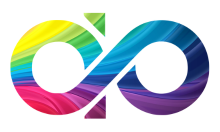The evolution of financial markets has been profoundly influenced by the integration of artificial intelligence (AI) into trading systems. Combining AI’s computational prowess with human judgment has proven to be a powerful strategy, yielding impressive results in terms of efficiency and decision-making. To build a robust human-enforced AI trading system, it’s essential to understand the key components and best practices involved. This guide outlines the necessary tools, technologies, and strategies to set up a successful system that leverages the strengths of both human and AI elements.
Key Components of a Human-AI Trading System
1. Data Infrastructure
A strong data infrastructure is foundational for any AI trading system:
- Data Collection: Implement tools for collecting diverse and high-quality financial data, including market prices, trading volumes, economic indicators, and news feeds.
- Data Storage: Use scalable and secure storage solutions to handle large volumes of data, ensuring fast access and reliable backup.
- Data Integration: Ensure seamless integration of various data sources to provide a comprehensive view of market conditions.
2. AI Models and Algorithms
Selecting and developing AI models tailored to trading is crucial:
- Machine Learning Models: Utilize supervised and unsupervised learning models to analyze historical data and identify patterns. Common models include decision trees, neural networks, and reinforcement learning algorithms.
- Predictive Analytics: Implement predictive models to forecast market trends and price movements based on historical data and real-time inputs.
- Natural Language Processing (NLP): Use NLP techniques to analyze news articles, social media, and financial reports to gauge market sentiment.
3. Human Oversight and Expertise
Human expertise is essential for validating and refining AI-driven insights:
- Traders and Analysts: Employ experienced traders and financial analysts to interpret AI-generated signals and make informed decisions.
- Ethical Review: Establish ethical guidelines and review processes to ensure that AI models and trading strategies align with responsible practices.
- Continuous Training: Provide ongoing training and education to human operators to keep them updated on AI advancements and market trends.
4. Execution Platforms and Tools
Effective execution platforms are necessary for implementing trading strategies:
- Trading Platforms: Choose reliable trading platforms that support automated trading and integration with AI models.
- Order Management Systems (OMS): Implement OMS for efficient order placement, tracking, and management.
- Execution Algorithms: Develop and deploy execution algorithms that minimize market impact and optimize trade execution.
5. Risk Management Systems
Risk management is vital for safeguarding against potential losses:
- Risk Assessment Models: Use AI-driven risk assessment tools to evaluate potential risks and monitor exposure.
- Stop-Loss Mechanisms: Implement automated stop-loss mechanisms to limit losses on trades that move against expectations.
- Portfolio Management: Employ AI tools for dynamic portfolio rebalancing and diversification to mitigate risk.
6. Compliance and Security
Ensuring compliance with regulations and securing the system is crucial:
- Regulatory Compliance: Stay updated with financial regulations and ensure that AI trading systems adhere to legal requirements.
- Cybersecurity Measures: Implement robust cybersecurity protocols to protect against data breaches and unauthorized access.
- Audit Trails: Maintain comprehensive audit trails for all trading activities and AI decision-making processes to facilitate transparency and accountability.
Best Practices for Building a Human-AI Trading System
1. Define Clear Objectives and Goals
Establish clear objectives for the AI trading system, such as target returns, risk tolerance, and market segments. Align the AI models and human strategies with these goals to ensure consistency and focus.
2. Adopt a Collaborative Approach
Foster collaboration between AI and human elements:
- Integration: Ensure that AI models and human decision-makers work together seamlessly, with AI providing actionable insights and humans adding contextual understanding and oversight.
- Feedback Loop: Create a feedback loop where human insights are used to refine AI models and vice versa, enhancing the system’s performance over time.
3. Regularly Monitor and Review
Continuously monitor and review the system’s performance:
- Performance Metrics: Track key performance indicators (KPIs) such as trade accuracy, return on investment (ROI), and risk-adjusted returns.
- Model Validation: Regularly validate and test AI models to ensure they adapt to changing market conditions and maintain accuracy.
4. Prioritize Transparency and Explainability
Ensure transparency in AI-driven decisions:
- Explainable AI (XAI): Invest in explainable AI technologies that provide insights into how decisions are made and the rationale behind trading strategies.
- Documentation: Maintain thorough documentation of AI models, decision-making processes, and trading strategies for clarity and accountability.
5. Focus on Ethical Considerations
Incorporate ethical considerations into the system’s design and operation:
- Bias Mitigation: Regularly audit AI models for biases and implement strategies to address any identified issues.
- Ethical Guidelines: Develop and enforce ethical guidelines to ensure responsible trading practices and avoid exploitation or unfair advantages.
6. Invest in Continuous Improvement
Commit to continuous improvement and innovation:
- Research and Development: Invest in ongoing research and development to enhance AI models and trading strategies.
- Training and Development: Provide continuous training for human operators to keep them abreast of new technologies and market developments.
Conclusion
Building a robust human-enforced AI trading system requires a thoughtful combination of technology and human expertise. By focusing on key components such as data infrastructure, AI models, human oversight, execution tools, risk management, and compliance, and adhering to best practices like clear goal-setting, collaboration, transparency, and ethical considerations, financial institutions can create a powerful and effective trading system. This synergy not only enhances trading efficiency but also ensures responsible and ethical use of technology in the financial markets.



Leave A Comment